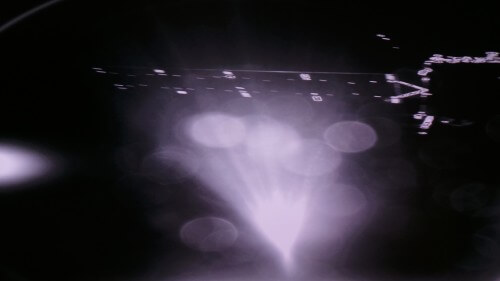Immediately after its landing, the Philae lander will take eight images in a row using the CIVA camera, six of which will be used to build a panoramic image of the surface of the comet's nucleus, and the scientific director of the camera guarantees that these images will be sharp

The European Space Agency has revealed the farewell photograph of Philae from Rosetta before landing on the comet.
Jean-Pierre Bibring, in charge of the CIVA camera, described the first image taken by the Philae lander about 40 seconds after detaching from the Rosetta spacecraft this morning. The picture shows the Rosetta spacecraft but the sun and Philae's rotation on its axis. According to him the quality of the image does not show what is expected on the surface of the comet. 67P Churyumov-Grasimenko.
Immediately after its landing, the Philae lander will take eight images in a row using the CIVA camera, six of which will be used to build a panoramic image of the surface of the comet's nucleus, and Bibring guarantees that these images will be sharp.
The reason for the long delay of five hours between the photo being taken and its publication is not only due to the distance between Rosetta and Philae and the Earth, but also stems from the need to transfer the images twice at low rates, once from Philae to Rosetta's computer and the second time from Rosetta's computer to Earth in a slow kebab until they are received by the network NASA's Deep Space, which made this resource available to the European Space Agency and provided the project with four scientific instruments.
In a separate article that will be published later, Paolo Perry, director of ESOC, says in an interview with the science website that the information technology in Rosetta is indeed outdated and does not meet today's standards of processor power, memory capacity and data transfer rate, but other technologies developed specifically for Rosetta are the most advanced of their kind to date.
For the previous articles during the last day
- Update: A signal was received from the lander. The director of the landing operation of the Philae spacecraft to the science site: one of the gas tanks intended to assist in the landing did not open, but we are sure that the landing on the comet will be smooth (The article contains a series of updates from the morning and afternoon hours)

5 תגובות
We docked a few minutes ago on the Comet